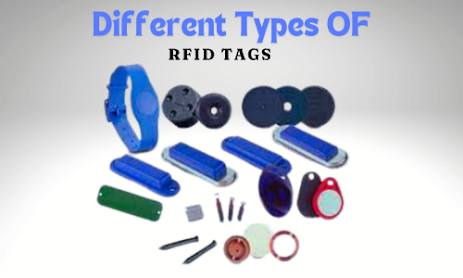Choosing the Right RFID Tag: A Breakdown of Different Types and Their Uses
Introduction to RFID Tags and Their Functionality
An RFID tag is composed of two fundamental components: an antenna for transmitting and receiving signals, and an RFID chip (or integrated circuit, IC) that stores the tag's ID and other relevant information.
RFID tags use radio waves to transmit data about an item to the antenna/reader combination. These tags typically do not have a battery, unless specified as Active or BAP tags. "They" refers to passive RFID tags, which do not have their own power source. Instead, they receive the energy required to operate from the radio waves generated by the RFID reader. When the tag receives the transmission from the antenna/reader, the energy flows through the internal antenna to the tag’s chip. This energy activates the chip, which then modulates the energy with the desired information and transmits a signal back to the antenna/reader.
On each chip, there are four memory banks – EPC, TID, User, and Reserved. Each of these memory banks contains information about the item that is tagged or the tag itself, depending on the bank and its specifications. Two of the memory banks, EPC and User, can store unique identifying information. The TID bank cannot be updated because it contains information about the tag itself and the unique tag identifier. The tag’s Reserved memory bank is used for special tag operations, such as locking the tag or expanding its available EPC memory. Different types of tags exist, including read-only tags that allow reading of stored data but not changing it, read/write tags that allow alteration or rewriting of stored data, and a combination of both, where some data is permanently stored while the remaining memory is left accessible for future encoding and updates.
 |
RFID Tag Types and Operational Modes
Hundreds of different RFID tags are
available in various shapes and sizes, each with features and options specific
to certain environments, surface materials, and applications. Choosing the
ideal tag for a specific application, environment, and item material is crucial
for optimal tag performance.
An RFID Tag can be categorized into
passive, semi-passive, or active.
l Passive tags, the more common variant, do not require
direct line-of-sight to a reader, making them versatile but with a shorter read
range. They are compact and lightweight, activated by the energy from an RFID
reader. This tag has a limited range of 0-15 meters, which makes it suitable
for short-range applications only. The reading range is constrained by the
power required to activate the chip. Given their size and cost, passive tags
are the most common and can be inlaid like labels or take the form of hard tags
made from materials such as plastic or metal. Ideal for applications requiring
close-range identification, such as inventory management, access
control, and retail item tracking.
l Active RFID tags, featuring a battery that requires
replacement every 3-5 years, excel in live tracking applications, offering an
extended read range compared to passive tags. They have a higher reading range
(up to 100 meters) than passive tags. These tags
are more expensive due to the cost of their battery and transmitter. Despite
the higher cost, they are suited for real-time tracking of high-value assets,
vehicle tracking, and monitoring large-scale operations like shipping and
logistics.
l Semi-Passive Tags, very rarely used, function somewhere
between active and passive tags. These tags are battery-powered, helping extend
the communication range. Find applications in environments where a longer
communication range is needed but where the continuous transmission of active
tags may not be necessary, such as environmental monitoring and equipment
maintenance tracking.
To Get More Information Visit our Website: https://www.idsolutionsindia.com/product/rfid-tags/

.png)


Comments
Post a Comment